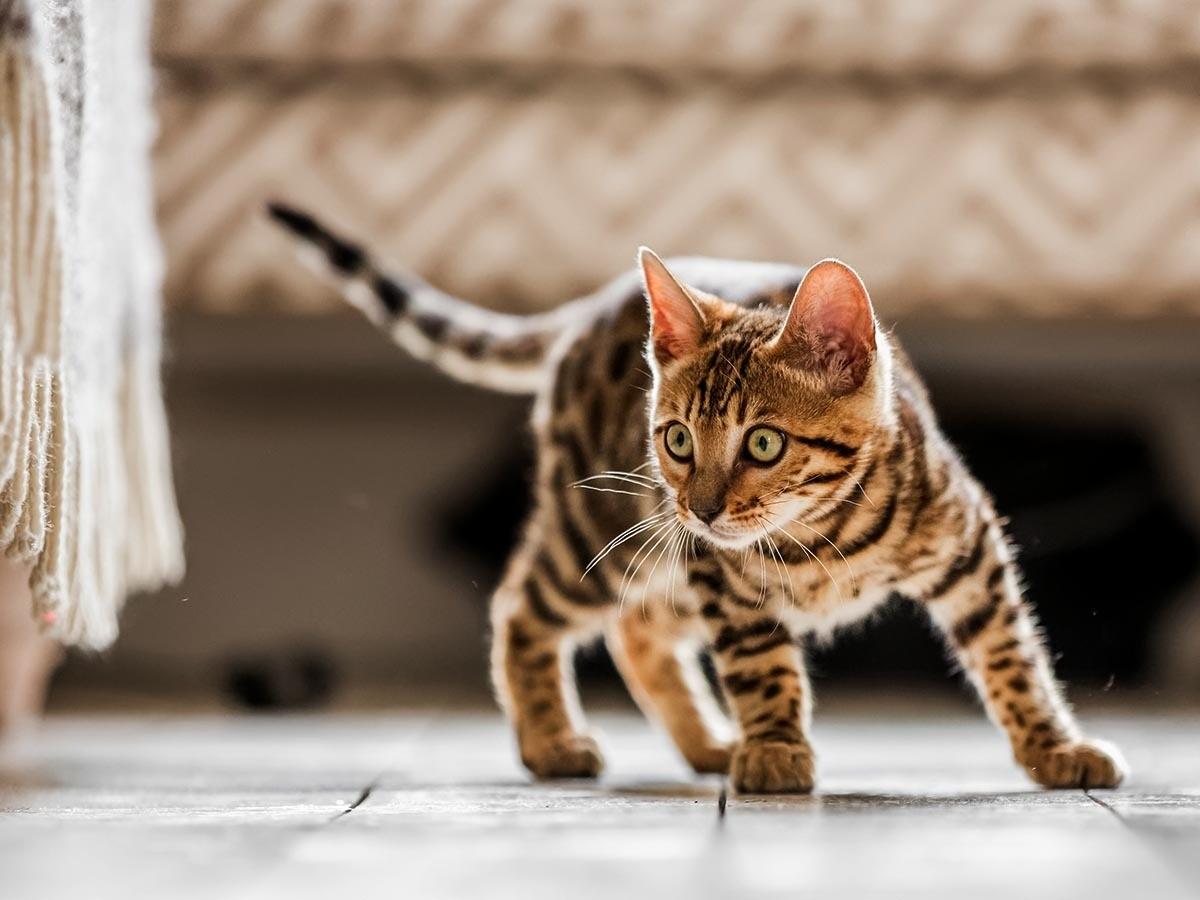Learn Kitten Communication
Translating “Catlish”
Kittens are famous for their charming meows and purrs, but cat communication goes far beyond vocalization. Your kitten will start communicating with you from the second they come home through what I call Catlish — the subtle body language all cats perform.
Look at all your kitten’s “talking points” to interpret their mood and focus.
Posture When it comes to cat communication, posture conveys a lot. Upright poses signal attention and awareness, relaxed poses convey a sense of calm, and a withdrawn pose conveys fear or defensiveness.
Eyes Your kitten’s eyes, specifically the dilation of their pupils, can provide a lot of insight into what they’re focusing on and how they’re feeling. A cat’s eyes will dilate when they’re taking in information (or in a low-lit environment) and constrict when they’re confident in their surroundings or comfortable with your company. Cats also use blinking to communicate affection. A slow blink or half-closed lids convey warmth and trust.
Ears Cats use their ears like a radar to detect sound and motion. When the ears are alert and facing forward, your kitten is processing whatever is ahead of them, including you. When rotating separately, their ears are distinguishing other sounds in their environment. When flattened back, they are conveying agitation and aggression.
Tail Think of your kitten’s tail as similar to your arms. In a relaxed pose, it signals contentment. A tucked under tail signals fear or deregulation. When raised up, the tail either flags friendliness or warning. The movement of a tail further signals a kitten’s emotions. Cats swish their tail as a sign of agitation. A bent, “question mark” tail signals a friendly hello.
Vocalization Whether or not your cat vocalizes in communication should not be a concern. Some do, some don’t. Purrs most often signal contentment, but can also alert to agitation in some cats. Kittens use meows, chirps, and chitters to engage, implore, or alert you to what is in their surroundings.
